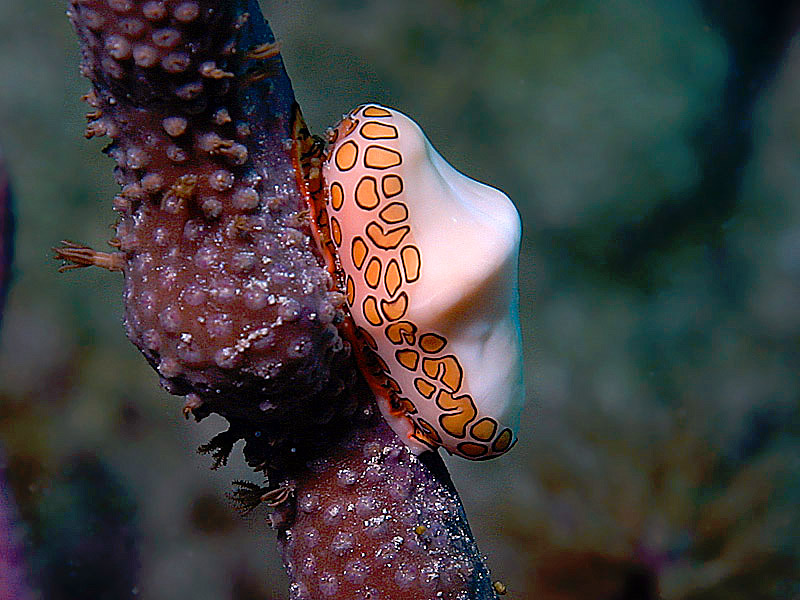
Volume 7 Number 9
Flamingo-Tongue Snail Devours Sea Rod Coral Polyps


Volume 7 Number 9
Flamingo-Tongue Snail Devours Sea Rod Coral Polyps

This close-up picture shows a Flamingo-Tongue Snail devouring the animals living in a Sea Rod Coral colony. You can see the beautiful Flamingo-Tongue Snail, which was only about 1 inch long. The snail is crawling on the soft material of the branch of a Sea Rod Coral colony. You can see many holes on bumps on the surface of the branch. Each hole is the home of one coral animal, called a coral polyp. Many of the animals have either been eaten by the snail or are hiding down inside their holes. You can see a few individual polyps sticking out of their holes on the left side of the branch away from the snail.
How does a snail eat with its foot? The foot of a snail works like the inside of your stomach. This foot secretes chemicals that break apart the animals on which the snail is walking. These animals get broken down into nutrients such as proteins that the snail can absorb through its foot. The snail is a member of a class of animals called Gastropoda, meaning stomach-footed animals.
Look closely and you can see that the orange-and-black spots on this Flamingo-Tongue Snail are not on the shell at all! Rather, these spots are on a layer of tissue that the snail pushes out from its foot to cover its shell. This covering can move back and forth across the surface of the shell, and you can see the edge of this covering in this picture. The shell of the Flamingo-Tongue Snail is completely white.
ReefNews President Jonathan Dowell took this picture using a Nikonos V camera with a 28 mm zoom lens and macro extension tube with a Nikonos strobe.
--------------------
e-ReefNews and embedded illustrations are
Copyright © 2006, ReefNews, Inc.
ReefNews ® is a registered trademark of ReefNews, Inc.